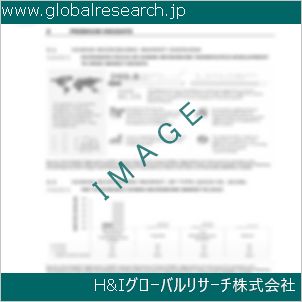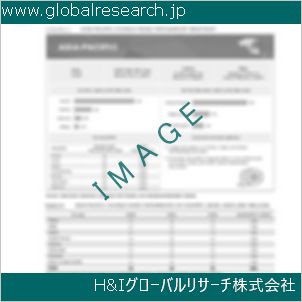1. Preface
1.1. Market Definition and Scope
1.2. Market Segmentation
1.3. Key Research Objectives
1.4. Research Highlights
2. Assumptions
3. Research Methodology
4. Executive Summary
5. Market Overview
5.1. Introduction
5.2. Market Dynamics
5.2.1. Drivers
5.2.2. Restraints
5.2.3. Opportunities
5.3. Key Trends Analysis
5.3.1. Demand Side Analysis
5.3.2. Supply Side Analysis
5.4. Key Market Indicators
5.4.1. Overall Lubrication System Industry
5.5. Porter’s Five Forces Analysis
5.6. Industry SWOT Analysis
5.7. Value Chain Analysis
5.8. Technological Overview Analysis
5.9. Trade Analysis (HS Code: 8479)
5.10. Regulatory Framework
5.11. Global Automatic Lubrication System Market Analysis and Forecast, 2017 – 2031
5.11.1. Market Value Projections (US$ Mn)
5.11.2. Market Volume Projections (Thousand Units)
6. Global Automatic Lubrication System Market Analysis and Forecast, By Type
6.1. Automatic Lubrication System Market Size (US$ Mn and Thousand Units) Forecast, By Type, 2017 – 2031
6.1.1. Oil-based
6.1.2. Grease-based
6.2. Incremental Opportunity, By Type
7. Global Automatic Lubrication System Market Analysis and Forecast, By System Type
7.1. Automatic Lubrication System Market Size (US$ Mn and Thousand Units) Forecast, By System Type, 2017 – 2031
7.1.1. Single-line Parallel System
7.1.2. Dual-line Parallel System
7.1.3. Single-line Progressive System
7.1.4. Multi-port Direct Lubricators System
7.1.5. Others
7.2. Incremental Opportunity, By System Type
8. Global Automatic Lubrication System Market Analysis and Forecast, End-use Industry
8.1. Automatic Lubrication System Market Size (US$ Mn and Thousand Units) Forecast, By End-use Industry, 2017 – 2031
8.1.1. Automotive
8.1.2. Construction
8.1.3. Mining
8.1.4. Agriculture
8.1.5. Manufacturing
8.1.6. Food & Beverage
8.1.7. Steel
8.1.8. Cement
8.1.9. Others
8.2. Incremental Opportunity, By End-use Industry
9. Global Automatic Lubrication System Market Analysis and Forecast, By Distribution Channel
9.1. Automatic Lubrication System Market Size (US$ Mn and Thousand Units) Forecast, By Distribution Channel, 2017 – 2031
9.1.1. Direct
9.1.2. Indirect
9.2. Incremental Opportunity, By Distribution Channel
10. Global Automatic Lubrication System Market Analysis and Forecast, By Region
10.1. Automatic Lubrication System Market Size (US$ Mn and Thousand Units) Forecast, By Region, 2017 – 2031
10.1.1. North America
10.1.2. Europe
10.1.3. Asia Pacific
10.1.4. Middle East & Africa
10.1.5. South America
10.2. Incremental Opportunity, By Region
11. North America Automatic Lubrication System Market Analysis and Forecast
11.1. Regional Snapshot
11.2. Key Supplier Analysis
11.3. Price Trend Analysis
11.3.1. Weighted Average Pricing (US$)
11.4. Key Trends Analysis
11.4.1. Demand Side
11.4.2. Supplier Side
11.5. Automatic Lubrication System Market Size (US$ Mn and Thousand Units) Forecast, By Type, 2017 – 2031
11.5.1. Oil-based
11.5.2. Grease-based
11.6. Automatic Lubrication System Market Size (US$ Mn and Thousand Units) Forecast, By System Type, 2017 – 2031
11.6.1. Single-line Parallel System
11.6.2. Dual-line Parallel System
11.6.3. Single-line Progressive System
11.6.4. Multi-port Direct Lubricators System
11.6.5. Others
11.7. Automatic Lubrication System Market Size (US$ Mn and Thousand Units) Forecast, By End-use Industry, 2017 – 2031
11.7.1. Automotive
11.7.2. Construction
11.7.3. Mining
11.7.4. Agriculture
11.7.5. Manufacturing
11.7.6. Food & Beverage
11.7.7. Steel
11.7.8. Cement
11.7.9. Others
11.8. Automatic Lubrication System Market Size (US$ Mn and Thousand Units) Forecast, By Distribution Channel, 2017 – 2031
11.8.1. Direct
11.8.2. Indirect
11.9. Automatic Lubrication System Market Size (US$ Mn and Thousand Units) Forecast, By Country/Sub Region, 2017 – 2031
11.9.1. U.S.
11.9.2. Canada
11.9.3. Rest of North America
11.10. Incremental Opportunity Analysis
12. Europe Automatic Lubrication System Market Analysis and Forecast
12.1. Regional Snapshot
12.2. Key Supplier Analysis
12.3. Price Trend Analysis
12.3.1. Weighted Average Pricing (US$)
12.4. Key Trends Analysis
12.4.1. Demand Side
12.4.2. Supplier Side
12.5. Automatic Lubrication System Market Size (US$ Mn and Thousand Units) Forecast, By Type, 2017 – 2031
12.5.1. Oil-based
12.5.2. Grease-based
12.6. Automatic Lubrication System Market Size (US$ Mn and Thousand Units) Forecast, By System Type, 2017 – 2031
12.6.1. Single-line Parallel System
12.6.2. Dual-line Parallel System
12.6.3. Single-line Progressive System
12.6.4. Multi-port Direct Lubricators System
12.6.5. Others
12.7. Automatic Lubrication System Market Size (US$ Mn and Thousand Units) Forecast, By End-use Industry, 2017 – 2031
12.7.1. Automotive
12.7.2. Construction
12.7.3. Mining
12.7.4. Agriculture
12.7.5. Manufacturing
12.7.6. Food & Beverage
12.7.7. Steel
12.7.8. Cement
12.7.9. Others
12.8. Automatic Lubrication System Market Size (US$ Mn and Thousand Units) Forecast, By Distribution Channel, 2017 – 2031
12.8.1. Direct
12.8.2. Indirect
12.9. Automatic Lubrication System Market Size (US$ Mn and Thousand Units) Forecast, By Country/Sub Region, 2017 – 2031
12.9.1. U.K.
12.9.2. Germany
12.9.3. France
12.9.4. Rest of Europe
12.10. Incremental Opportunity Analysis
13. Asia Pacific Automatic Lubrication System Market Analysis and Forecast
13.1. Regional Snapshot
13.2. Key Supplier Analysis
13.3. Price Trend Analysis
13.3.1. Weighted Average Pricing (US$)
13.4. Key Trends Analysis
13.4.1. Demand Side
13.4.2. Supplier Side
13.5. Automatic Lubrication System Market Size (US$ Mn and Thousand Units) Forecast, By Type, 2017 – 2031
13.5.1. Oil-based
13.5.2. Grease-based
13.6. Automatic Lubrication System Market Size (US$ Mn and Thousand Units) Forecast, By System Type, 2017 – 2031
13.6.1. Single-line Parallel System
13.6.2. Dual-line Parallel System
13.6.3. Single-line Progressive System
13.6.4. Multi-port Direct Lubricators System
13.6.5. Others
13.7. Automatic Lubrication System Market Size (US$ Mn and Thousand Units) Forecast, By End-use Industry, 2017 – 2031
13.7.1. Automotive
13.7.2. Construction
13.7.3. Mining
13.7.4. Agriculture
13.7.5. Manufacturing
13.7.6. Food & Beverage
13.7.7. Steel
13.7.8. Cement
13.7.9. Others
13.8. Automatic Lubrication System Market Size (US$ Mn and Thousand Units) Forecast, By Distribution Channel, 2017 – 2031
13.8.1. Direct
13.8.2. Indirect
13.9. Automatic Lubrication System Market Size (US$ Mn and Thousand Units) Forecast, By Country/Sub Region, 2017 – 2031
13.9.1. India
13.9.2. China
13.9.3. Japan
13.9.4. Rest of Asia Pacific
13.10. Incremental Opportunity Analysis
14. Middle East & Africa Automatic Lubrication System Market Analysis and Forecast
14.1. Regional Snapshot
14.2. Key Supplier Analysis
14.3. Price Trend Analysis
14.3.1. Weighted Average Pricing (US$)
14.4. Key Trends Analysis
14.4.1. Demand Side
14.4.2. Supplier Side
14.5. Automatic Lubrication System Market Size (US$ Mn and Thousand Units) Forecast, By Type, 2017 – 2031
14.5.1. Oil-based
14.5.2. Grease-based
14.6. Automatic Lubrication System Market Size (US$ Mn and Thousand Units) Forecast, By System Type, 2017 – 2031
14.6.1. Single-line Parallel System
14.6.2. Dual-line Parallel System
14.6.3. Single-line Progressive System
14.6.4. Multi-port Direct Lubricators System
14.6.5. Others
14.7. Automatic Lubrication System Market Size (US$ Mn and Thousand Units) Forecast, By End-use Industry, 2017 – 2031
14.7.1. Automotive
14.7.2. Construction
14.7.3. Mining
14.7.4. Agriculture
14.7.5. Manufacturing
14.7.6. Food & Beverage
14.7.7. Steel
14.7.8. Cement
14.7.9. Others
14.8. Automatic Lubrication System Market Size (US$ Mn and Thousand Units) Forecast, By Distribution Channel, 2017 – 2031
14.8.1. Direct
14.8.2. Indirect
14.9. Automatic Lubrication System Market Size (US$ Mn and Thousand Units) Forecast, By Country/Sub Region, 2017 – 2031
14.9.1. GCC
14.9.2. Rest of Middle East & Africa
14.10. Incremental Opportunity Analysis
15. South America Automatic Lubrication System Market Analysis and Forecast
15.1. Regional Snapshot
15.2. Key Supplier Analysis
15.3. Price Trend Analysis
15.3.1. Weighted Average Pricing (US$)
15.4. Key Trends Analysis
15.4.1. Demand Side
15.4.2. Supplier Side
15.5. Automatic Lubrication System Market Size (US$ Mn and Thousand Units) Forecast, By Type, 2017 – 2031
15.5.1. Oil-based
15.5.2. Grease-based
15.6. Automatic Lubrication System Market Size (US$ Mn and Thousand Units) Forecast, By System Type, 2017 – 2031
15.6.1. Single-line Parallel System
15.6.2. Dual-line Parallel System
15.6.3. Single-line Progressive System
15.6.4. Multi-port Direct Lubricators System
15.6.5. Others
15.7. Automatic Lubrication System Market Size (US$ Mn and Thousand Units) Forecast, By End-use Industry, 2017 – 2031
15.7.1. Automotive
15.7.2. Construction
15.7.3. Mining
15.7.4. Agriculture
15.7.5. Manufacturing
15.7.6. Food & Beverage
15.7.7. Steel
15.7.8. Cement
15.7.9. Others
15.8. Automatic Lubrication System Market Size (US$ Mn and Thousand Units) Forecast, By Distribution Channel, 2017 – 2031
15.8.1. Direct
15.8.2. Indirect
15.9. Automatic Lubrication System Market Size (US$ Mn and Thousand Units) Forecast, By Country/Sub Region, 2017 – 2031
15.9.1. Brazil
15.9.2. Rest of South America
15.10. Incremental Opportunity Analysis
16. Competition Landscape
16.1. Market Player – Competition Dashboard
16.2. Market Share Analysis (%), by Company, (2022)
16.3. Company Profiles (Details – Company Overview, Sales Area/Geographical Presence, Revenue, Strategy & Business Overview)
16.3.1. AB SKF
16.3.1.1. Company Overview
16.3.1.2. Sales Area/Geographical Presence
16.3.1.3. Revenue
16.3.1.4. Strategy & Business Overview
16.3.2. Eugen Woerner GmbH & Co. KG
16.3.2.1. Company Overview
16.3.2.2. Sales Area/Geographical Presence
16.3.2.3. Revenue
16.3.2.4. Strategy & Business Overview
16.3.3. Freudenberg & Co. KG
16.3.3.1. Company Overview
16.3.3.2. Sales Area/Geographical Presence
16.3.3.3. Revenue
16.3.3.4. Strategy & Business Overview
16.3.4. Graco Inc.
16.3.4.1. Company Overview
16.3.4.2. Sales Area/Geographical Presence
16.3.4.3. Revenue
16.3.4.4. Strategy & Business Overview
16.3.5. Omarx Technologies
16.3.5.1. Company Overview
16.3.5.2. Sales Area/Geographical Presence
16.3.5.3. Revenue
16.3.5.4. Strategy & Business Overview
16.3.6. Perma-tec GmbH & Co. KG
16.3.6.1. Company Overview
16.3.6.2. Sales Area/Geographical Presence
16.3.6.3. Revenue
16.3.6.4. Strategy & Business Overview
16.3.7. Redex Group
16.3.7.1. Company Overview
16.3.7.2. Sales Area/Geographical Presence
16.3.7.3. Revenue
16.3.7.4. Strategy & Business Overview
16.3.8. Summa Holdings, Inc.
16.3.8.1. Company Overview
16.3.8.2. Sales Area/Geographical Presence
16.3.8.3. Revenue
16.3.8.4. Strategy & Business Overview
16.3.9. The Weir Group PLC
16.3.9.1. Company Overview
16.3.9.2. Sales Area/Geographical Presence
16.3.9.3. Revenue
16.3.9.4. Strategy & Business Overview
16.3.10. Timken Company
16.3.10.1. Company Overview
16.3.10.2. Sales Area/Geographical Presence
16.3.10.3. Revenue
16.3.10.4. Strategy & Business Overview
17. Go To Marketing Strategy
17.1. Identification of Potential Market Spaces
17.2. Prevailing Market Risks
17.3. Understanding the Buying Process of Customers
17.4. Preferred Sales & Marketing Strategy
❖ 免責事項 ❖
http://www.globalresearch.jp/disclaimer












